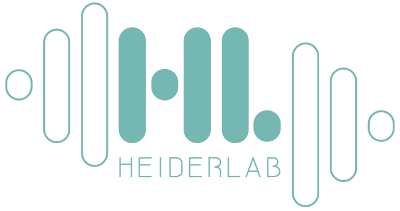CORona Drug InTEractions database
Site-specific N-glycosylation Characterization of Recombinant SARS-CoV-2 Spike Proteins using High-Resolution Mass Spectrometry
Yong Zhang, Wanjun Zhao, Yonghong Mao, Shisheng Wang, Yi Zhong, Tao Su, Meng Gong, Xiaofeng Lu, Jingqiu Cheng, Hao Yang
Abstract
The global pandemic of severe acute pneumonia syndrome (COVID-19) caused by SARS-CoV-2 urgently calls for prevention and intervention strategies. The densely glycosylated spike (S) protein highly exposed on the viral surface is a determinant for virus binding and invasion into host cells as well as elicitation of a protective host immune response. Herein, we characterized the site-specific N-glycosylation of SARS-CoV-2 S protein using stepped collision energy (SCE) mass spectrometry (MS). Following digestion with two complementary proteases to cover all potential N-glycosylation sequons and integrated N-glycoproteomics analysis, we revealed the N-glycosylation profile of SARS-CoV-2 S proteins at the levels of intact N-glycopeptides and glycosites, along with the glycan composition and site-specific number of glycans. All 22 potential canonical N-glycosites were identified in S protein protomer. Of those, 18 N-glycosites were conserved between SARS-CoV and SARS-CoV-2 S proteins. Nearly all glycosites were preserved among the 753 SARS-CoV-2 genome sequences available in the public influenza database Global Initiative on Sharing All Influenza Data. By comparison, insect cell-expressed SARS-CoV-2 S protein contained 38 N-glycans, which were primarily assigned to the high-mannose type N-glycans, whereas the human cell-produced protein possessed up to 140 N-glycans largely belonging to the complex type. In particular, two N-glycosites located in the structurally exposed receptor-binding domain of S protein exhibited a relatively conserved N-glycan composition in human cells. This N-glycosylation profiling and determination of differences between distinct expression systems could shed light on the infection mechanism and promote development of vaccines and targeted drugs.
Source: BioRxiv
Related molecules
| Name | Synonyms | Genes |
|---|---|---|
| Spike glycoprotein | Spike protein, S glycoprotein, S-Protein, S1, S2, S3, Peplomer protein, E2 | S, ORF2 |
| Target | Target affiliation | Drug | Type | Result |
|---|---|---|---|---|
| Target | Target affiliation | Drug | Type | Result |
| Name | Synonyms | Genes | Origin |
|---|---|---|---|
| Name | Synonyms | Genes | Origin |
| Name | Synonyms | PubChem | DrugBank | RCSB PDB | ATC |
|---|---|---|---|---|---|
| Name | Synonyms | PubChem | DrugBank | RCSB PDB | ATC |
| Title | Authors | DOI | Source | Article type | Date |
|---|---|---|---|---|---|
| Title | Authors | DOI | Source | Article type | Date |
| Title | Status | Phases | Start Date | Prim. Comp. Date | Comp. Date | First Post. Date |
|---|---|---|---|---|---|---|
| Title | Status | Phases | Start Date | Prim. Comp. Date | Comp. Date | First Post. Date |
CORDITE (CORona Drug InTEractions database) collects and aggregates data from PubMed, MedRxiv, BioRxiv, ChemRxiv and PMC for SARS-CoV-2. Its main focus is set on drug interactions either addressing viral proteins or human proteins that could be used to treat COVID. It collects and provides up-to-date information on computational predictions, in vitro, as well as in vivo study data.
The information provided is for research only and we cannot guarantee the correctness of the data.
Please contact dominik.heider@uni-muenster.de for further information.
Programmable access
There is an open API for access programmatically to the database. The API will print a JSON output:
- Interactions
https://cordite-api.uni-muenster.de/api.php?action=list&table=interaction
- Targets
https://cordite-api.uni-muenster.de/api.php?action=list&table=target
- Drugs
https://cordite-api.uni-muenster.de/api.php?action=list&table=drug
- Publications
https://cordite-api.uni-muenster.de/api.php?action=list&table=publication
- Clinical trials
https://cordite-api.uni-muenster.de/api.php?action=list&table=clinical_trial

